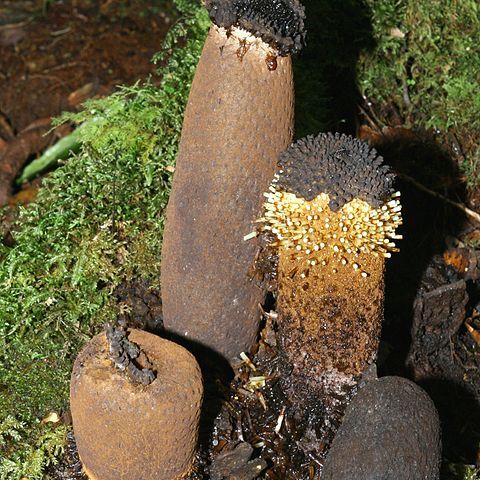Plants 15-30 cm tall, yellowish to brownish. Rhizome 6-13 × (4-)6-21 cm; sheath lobes 5, irregularly deltoid, 1-2 × 1.2-1.5 cm. Scapes 2-10 × 2-5 cm. Leaves spirally arranged, ± scattered, warty, apically slightly reflexed. Inflorescences 7-20 × 3-7.5 cm, when androgynous male flowers toward base and female flowers toward apex; scale-like bracts larger at middle of inflorescence, apically ca. 5 mm in diam. Flowers sessile.

